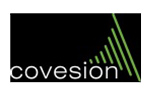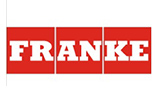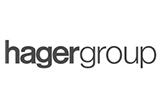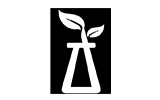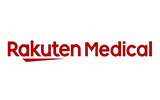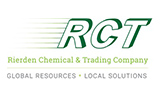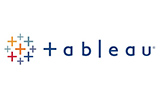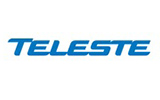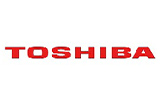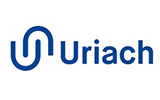1. Research Framework
1.1. Research Objective
1.2. Product Overview
1.3. Market Segmentation
2. Executive Summary
3. GCC Cybersecurity Market Insights
3.1. Industry Value Chain Analysis
3.1.1. DROC Analysis
3.1.2. Growth Drivers
3.1.2.1. Increasing adoption of cloud computing and IoT technologies
3.1.2.2. Rising cybersecurity threats and growing incidents of data breaches
3.1.2.3. Government initiatives and regulations promoting cybersecurity compliance
3.1.3. Restraints
3.1.3.1. High costs associated with advanced cybersecurity solutions
3.1.3.2. Shortage of skilled cybersecurity professionals in the region
3.1.4. Opportunities
3.1.4.1. Growing demand for AI and machine learning-based cybersecurity solutions
3.1.4.2. Expansion of smart city projects in GCC countries
3.1.4.3. Increasing focus on securing industrial IoT (IIoT) systems
3.1.5. Challenges
3.1.5.1. Rapid evolution of sophisticated cyber threats, making mitigation difficult
3.1.5.2. Lack of standardized cybersecurity frameworks across the region
3.2. Technological Advancements/Recent Developments
3.3. Regulatory Framework
3.4. Porter's Five Forces Analysis
3.4.1. Bargaining Power of Suppliers
3.4.2. Bargaining Power of Buyers
3.4.3. Threat of New Entrants
3.4.4. Threat of Substitutes
3.4.5. Intensity of Rivalry
4. GCC Cybersecurity Market: Marketing Strategies
5. GCC Cybersecurity Market Overview
5.1. Market Size & Forecast, 2019-2031
5.1.1. By Value (USD Billion)
5.2. Market Share & Forecast
5.2.1. By Component
5.2.1.1. Solutions
5.2.1.2. Services
5.2.2. By Security Type
5.2.2.1. Network Security
5.2.2.2. Endpoint Security
5.2.2.3. Cloud Security
5.2.2.4. Application Security
5.2.2.5. Data Security
5.2.2.6. Others (IoT Security, Operational Technology Security)
5.2.3. By Deployment Mode
5.2.3.1. On-Premises
5.2.3.2. Cloud-based
5.2.4. By Organization Size
5.2.4.1. Small and Medium-sized Enterprises (SMEs)
5.2.4.2. Large Enterprises
5.2.5. By Industry Vertical
5.2.5.1. Banking, Financial Services, and Insurance (BFSI)
5.2.5.2. IT & Telecommunications
5.2.5.3. Government & Defense
5.2.5.4. Healthcare
5.2.5.5. Energy & Utilities
5.2.5.6. Retail & E-commerce
5.2.5.7. Manufacturing
5.2.5.8. Education
5.2.5.9. Others (Media & Entertainment, Transport)
5.2.6. By Country
5.2.6.1. Saudi Arabia
5.2.6.2. UAE
5.2.6.3. Qatar
5.2.6.4. Bahrain
5.2.6.5. Kuwait
5.2.6.6. Oman
6. Saudi Arabia Cybersecurity Market
6.1. Market Size & Forecast, 2019-2031
6.1.1. By Value (USD Billion)
6.2. Market Share & Forecast
6.2.1. By Component
6.2.2. By Security Type
6.2.3. By Deployment Mode
6.2.4. By Organization Size
6.2.5. By Industry Vertical
7. UAE Cybersecurity Market
7.1. Market Size & Forecast, 2019-2031
7.1.1. By Value (USD Billion)
7.2. Market Share & Forecast
7.2.1. By Component
7.2.2. By Security Type
7.2.3. By Deployment Mode
7.2.4. By Organization Size
7.2.5. By Industry Vertical
8. Qatar Cybersecurity Market
8.1. Market Size & Forecast, 2019-2031
8.1.1. By Value (USD Billion)
8.2. Market Share & Forecast
8.2.1. By Component
8.2.2. By Security Type
8.2.3. By Deployment Mode
8.2.4. By Organization Size
8.2.5. By Industry Vertical
9. Bahrain Cybersecurity Market
9.1. Market Size & Forecast, 2019-2031
9.1.1. By Value (USD Billion)
9.2. Market Share & Forecast
9.2.1. By Component
9.2.2. By Security Type
9.2.3. By Deployment Mode
9.2.4. By Organization Size
9.2.5. By Industry Vertical
10. Kuwait Cybersecurity Market
10.1. Market Size & Forecast, 2019-2031
10.1.1. By Value (USD Billion)
10.2. Market Share & Forecast
10.2.1. By Component
10.2.2. By Security Type
10.2.3. By Deployment Mode
10.2.4. By Organization Size
10.2.5. By Industry Vertical
11. Oman Cybersecurity Market
11.1. Market Size & Forecast, 2019-2031
11.1.1. By Value (USD Billion)
11.2. Market Share & Forecast
11.2.1. By Component
11.2.2. By Security Type
11.2.3. By Deployment Mode
11.2.4. By Organization Size
11.2.5. By Industry Vertical
12. Competitive Landscape
12.1. List of Key Players and Their Components
12.2. GCC Cybersecurity Company Market Share Analysis, 2024
12.3. Competitive Benchmarking, By Operating Parameters
12.4. Key Strategic Developments (Mergers, Acquisitions, Partnerships)
13. Impact of Geopolitical Tensions on GCC Cybersecurity Market
14. Company Profiles (Company Overview, Financial Matrix, Competitive Landscape, Key Personnel, Key Competitors, Contact Address, Strategic Outlook, and SWOT Analysis)
14.1. BAE Systems
14.2. Microsoft
14.3. McAfee, LLC
14.4. Thales
14.5. Rapid7
14.6. Trend Micro Incorporated
14.7. Cisco Systems, Inc.
14.8. IBM Corporation
14.9. Oracle
14.10. Johnson Controls
14.11. Other Prominent Players
15. Key Strategic Recommendations
16. Research Methodology
16.1. Qualitative Research
16.1.1. Primary & Secondary Research
16.2. Quantitative Research
16.3. Market Breakdown & Data Triangulation
16.3.1. Secondary Research
16.3.2. Primary Research
16.4. Breakdown of Primary Research Respondents, By Country
16.5. Assumptions & Limitations
*Financial information of non-listed companies can be provided as per availability.
**The segmentation and the companies are subject to modifications based on in-depth secondary research for the final deliverable




